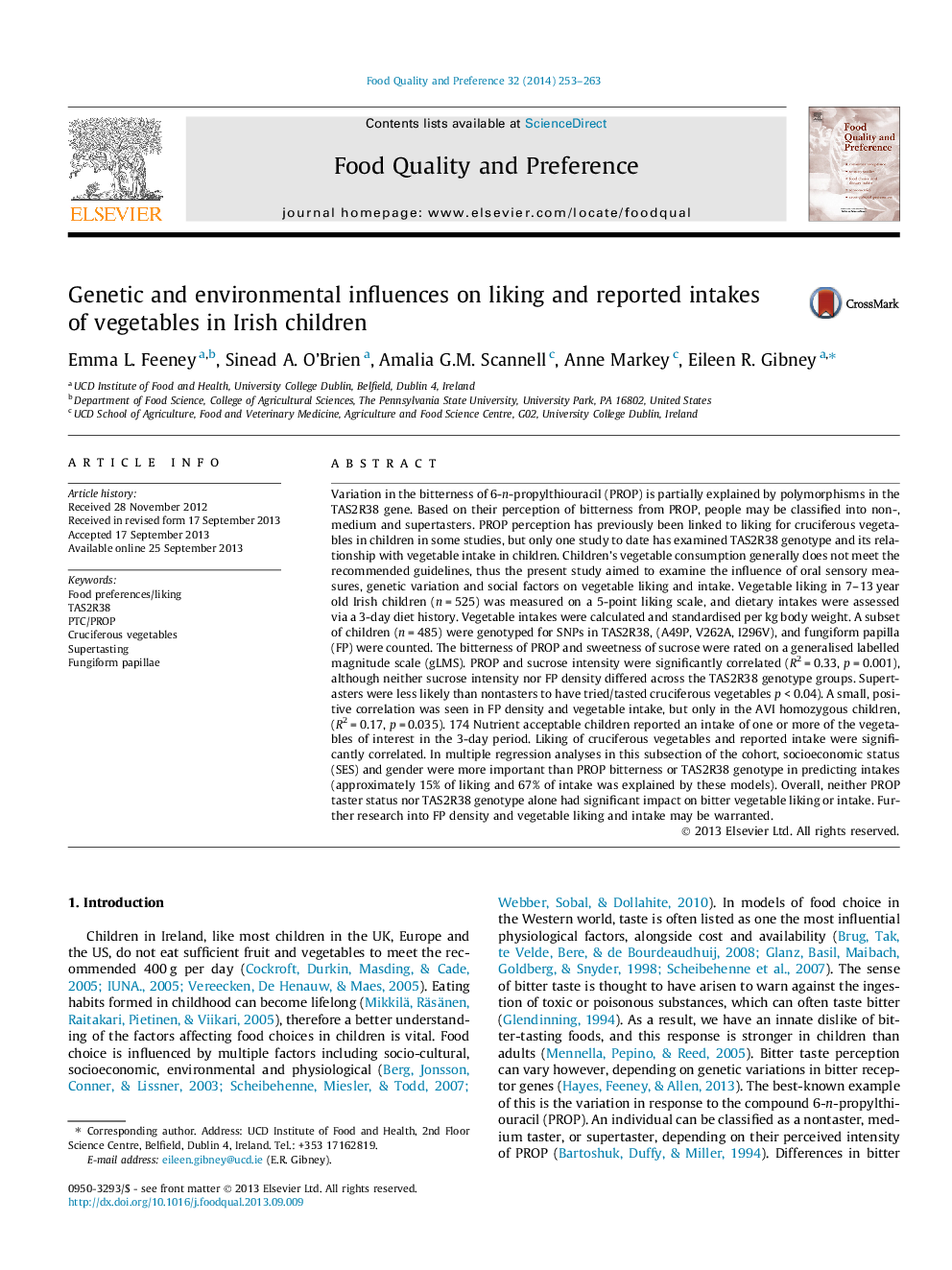| کد مقاله | کد نشریه | سال انتشار | مقاله انگلیسی | نسخه تمام متن |
|---|---|---|---|---|
| 4317271 | 1290586 | 2014 | 11 صفحه PDF | دانلود رایگان |
• We conducted a dietary survey of 7–13 years old children and carried out taste perception tests.
• Children were genotyped for SNPs in TAS2R38, and fungiform papillae (FP) were counted.
• Vegetable intake did not differ between TAS2R38 genotypes or PROP taster groups.
• PROP and sucrose ratings were correlated but did not affect cruciferous vegetable liking or intake.
• SES and gender were the greatest predictors of liking and intake.
Variation in the bitterness of 6-n-propylthiouracil (PROP) is partially explained by polymorphisms in the TAS2R38 gene. Based on their perception of bitterness from PROP, people may be classified into non-, medium and supertasters. PROP perception has previously been linked to liking for cruciferous vegetables in children in some studies, but only one study to date has examined TAS2R38 genotype and its relationship with vegetable intake in children. Children’s vegetable consumption generally does not meet the recommended guidelines, thus the present study aimed to examine the influence of oral sensory measures, genetic variation and social factors on vegetable liking and intake. Vegetable liking in 7–13 year old Irish children (n = 525) was measured on a 5-point liking scale, and dietary intakes were assessed via a 3-day diet history. Vegetable intakes were calculated and standardised per kg body weight. A subset of children (n = 485) were genotyped for SNPs in TAS2R38, (A49P, V262A, I296V), and fungiform papilla (FP) were counted. The bitterness of PROP and sweetness of sucrose were rated on a generalised labelled magnitude scale (gLMS). PROP and sucrose intensity were significantly correlated (R2 = 0.33, p = 0.001), although neither sucrose intensity nor FP density differed across the TAS2R38 genotype groups. Supertasters were less likely than nontasters to have tried/tasted cruciferous vegetables p < 0.04). A small, positive correlation was seen in FP density and vegetable intake, but only in the AVI homozygous children, (R2 = 0.17, p = 0.035). 174 Nutrient acceptable children reported an intake of one or more of the vegetables of interest in the 3-day period. Liking of cruciferous vegetables and reported intake were significantly correlated. In multiple regression analyses in this subsection of the cohort, socioeconomic status (SES) and gender were more important than PROP bitterness or TAS2R38 genotype in predicting intakes (approximately 15% of liking and 67% of intake was explained by these models). Overall, neither PROP taster status nor TAS2R38 genotype alone had significant impact on bitter vegetable liking or intake. Further research into FP density and vegetable liking and intake may be warranted.
Journal: Food Quality and Preference - Volume 32, Part C, March 2014, Pages 253–263
